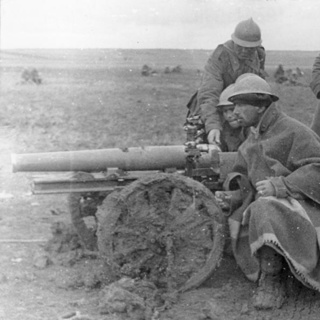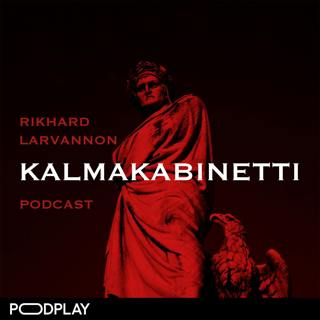
103. Great Reform
The shift from Tories to Whigs in government in 1830 was dramatic enough, but nothing like as dramatic as the changes that had taken place in Britain as a nation. Both the impact of the Industrial Revolution, creating large new middle and working classes, and the continued decline in the power of the throne, meant that there was a growing and eventually irresistible demand for new groups of people to have a say in power, and that meant in Parliament. That didn’t, however, make Reform a smooth process. There had to be three attempts to get the Reform Act passed, accompanied by a lot of unrest, as well as another General Election which gave Earl Grey, and the Reform movement he led, a huge majority in the House of Commons. Even so, the King got in the way, and the House of Lords did what it could to block the Act or leave it toothless. But, in a further measure of their own increasing powerlessness, they ultimately couldn’t stop it. Britain at last took its first step in Parliamentary reform when the Great Reform Act was passed in 1832. Illustration: Painting by W J Müller of the burning of the Bishop's Palace in Bristol, October 1831, from https://www.brh.org.uk/site/articles/bristol-1831-the-queens-square-uprising/ Music: Bach Partita #2c by J Bu licensed under an Attribution-NonCommercial-No Derivatives (aka Music Sharing) 3.0 International License
14 Elo 202214min

102. Aristocrats in pursuit of reform
Just who were these Whigs? It turns out that, though theirs would be a government having to undertake reform, in its make-up it would be the most aristocratic of the century. Since the biggest obstacle to reform were the aristocrats and their acolytes, that was a tad ironic. The problem was that the pressure to do something about the condition of the poor was becoming irresistible. And there was increasing awareness that if change was needed, it now had to come from Parliament. Royal power was continuing to fade as Parliament’s grew. That just made it all the more urgent to get some kind of voice there. Illustration: Sir George Hayter, The House of Commons, 1833, during Earl Grey’s Government. National Portrait Gallery 54 Music: Bach Partita #2c by J Bu licensed under an Attribution-NonCommercial-No Derivatives (aka Music Sharing) 3.0 International License
7 Elo 202214min

101. The Whigs are back
It had been 46 years. In all that time, apart from the 14 months when they had led the Ministry of all the Talents in 1806-1807, the Whigs had been excluded from power. But in 1830, they at last came back. A lot of that was down to the divisions in the Tory Party – now increasingly called the Tory Party again, even by its members – which under the pressure of civil reform (Emancipation of Protestant Dissenters and then the even more historic Emancipation of Catholics) and economic difficulties, had begun to split into Liberal Tory and High Tory wings. George IV died. William IV took over. Wellington mishandled the Commons. And the Whigs took over. With Reform of Parliament the great pending question on the agenda. Illustration: Charles Grey, Second Earl Grey. Based on a mid-19th century work by Sir Thomas Lawrence. National Portrait Gallery 1190 Music: Bach Partita #2c by J Bu licensed under an Attribution-NonCommercial-No Derivatives (aka Music Sharing) 3.0 International License
31 Heinä 202214min

100. From upstart to superpower
To greet our reaching 100 episodes, we’re going to pause and recap how far we’ve come. When we started, England, was just a small country on the edge of Europe, trying to punch above its weight, giving far more powerful nations – notably Spain – a bad time. But then it grew, sorting some of its constitutional problems as it went, often painfully, as in the Civil Wars and the execution of the King. In the course of the eighteenth century, it fought war after war against France, and also kept going with its constitutional progress, reducing the power of the monarch in relation to parliament. Military advances and constitutional change were, however, also accompanied by another and even more powerful development: the emergence of an environment encouraging business, backed by a major, reliable and effective financial system, including a well-run stock market, which produced the conditions for technical and scientific innovation to launch the industrial revolution. By the early nineteenth century, England, which had merged first with Scotland and then with Ireland to become the leading nation of the United Kingdom, was an economic powerhouse. With victory in the final war against France, it had become the global superpower of its time. A long way from the upstart snapping at the heels of grownups at the top table we saw back in episode 1… Music: Bach Partita #2c by J Bu licensed under an Attribution-NonCommercial-No Derivatives (aka Music Sharing) 3.0 International License
24 Heinä 202214min

99. Cops and Catholics
The cops are what Robert Peel’s best remembered for. Thanks to him, the world’s first professional, civilian police force was launched. It hasn’t always lived up to initial expectations, with London’s Metropolitan Police going through particularly difficult times just now but, boy, it’s an initiative that has left its mark. And not just in Britain. There was controversy about setting up a police force, with some resisting the idea of paying people to keep an eye on them and make sure they behaved. To libertarians, that felt like an incursion on basic freedoms. But far more controversial still was the extension of political rights to non-Anglican religious groups. First, it was dissident Protestants, and Peel had to change his tune to support their emancipation. But next it was the Catholics, and his U-turn was even more shocking. Nicknamed ‘Orange Peel’ for is backing for the Protestant (Orange) cause, it was astonishing to see him leading the charge for Catholic Emancipation in 1829. But Peel's dramatic changes of view would astonish a lot of people, a lot of times in his career. Illustration: Photograph of a ‘Peeler’ of the 1850s. Public domain (PD-US-expired). Music: Bach Partita #2c by J Bu licensed under an Attribution-NonCommercial-No Derivatives (aka Music Sharing) 3.0 International License
17 Heinä 202214min

98. A Conservative Reformer
Reformers were on the move. Elizabeth Fry was notable as a woman speaking out in a man’s world, campaigning for prison reform, especially for women prisoners. But there were many others, notably the Utilitarian philosopher Jeremy Bentham, who found a strange way of having his body dealt with after death. A slightly ghoulish way. But whatever clarion voices campaigned for reform outside Parliament, real change could only come from inside, and specifically from Ministers. And this led to a strange phenomenon: some first steps towards essential reforms being taken by a man whose reputation was as anything but a reformer. He was the new Home Secretary, and he was taking a highly innovative approach to public opinion, one much closer to politicians’ attitudes in our own times. That’s Robert Peel storming back onto the scene. Illustration: The reformer and champion of women prisoners, Elizabeth Fry, by Samuel Drummond, ca. 1815. National Portrait Gallery 118. Music: Bach Partita #2c by J Bu licensed under an Attribution-NonCommercial-No Derivatives (aka Music Sharing) 3.0 International License
10 Heinä 202214min

97. The times they are a'changing
That poor, saintly William Wilberforce. He’d spoken with such courage and dedication for the slaves for so long. And yet now, with a more radical movement emerging championing the poor and oppressed in Britain itself, he found himself the target of hostile attack. Aging and with his health going, He withdrew from public life in 1825. Meanwhile, Canning was back in government, serving under Lord Liverpool, who was endeavouring to deal with the difficulties of the time. Above all, they were caused by the growing hardship suffered by the poor, and this episode looks briefly at some of the economic factors that were making things worse. That just added fuel to the fire of the Radicals, who were demanding action to improve the lives of British workers, whose poverty could hardly be justified in the nation with biggest economy per capita in the world. Essentially, that would determine the battle lines in politics for the next two decades: parliamentary reform, to give the underprivileged a greater voice, and the end of the Corn Laws, which served great landowners well but kept food prices high. Illustration: William Cobbett, by John Raphael Smith, engraved 1812. Note the portrait behind him of John Hampden, the great leader of the resistance to Charles I in the seventeenth century, also an icon for the American rebels in the eighteenth. National Portrait Gallery 6870 Music: Bach Partita #2c by J Bu licensed under an Attribution-NonCommercial-No Derivatives (aka Music Sharing) 3.0 International License
3 Heinä 202214min

96. Scandals galore
A scandalous episode: first the king trying to divorce his wife and a major domestic row developing between them, all conducted in public, with armed guards and slammed doors to exclude the Queen from her husband's coronation. Wonderful proof that the Royal family’s gift for generating bad publicity, and entertaining the population with it, is nothing new. Next, a repressive government is met by an attempt at armed revolt, leading to public executions enjoyed by a crowd of thousands. And finally, driven by overwork and mental illness, a much-maligned giant of the political world puts an end to it all. Three scandals in one episode. Who could ask for more? Illustration: The Trial of Queen Caroline 1820, by Sir George Hayter, 1820-1823. National Portrait Gallery 999 Music: Bach Partita #2c by J Bu licensed under an Attribution-NonCommercial-No Derivatives (aka Music Sharing) 3.0 International License
26 Kesä 202214min






















